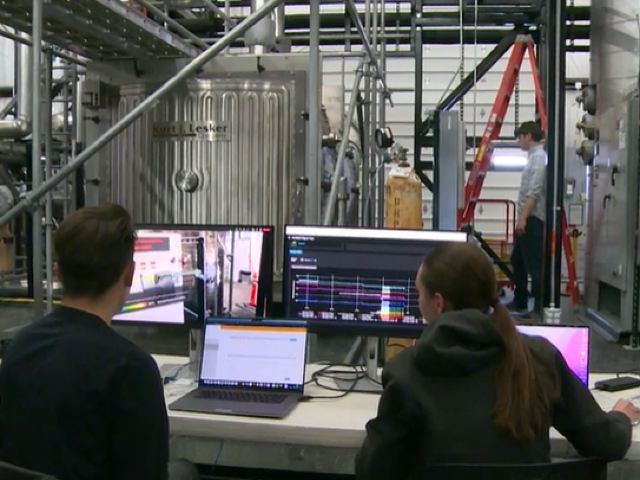
Researchers at the Energy Department’s Idaho National Laboratory (INL) recently performed their first digital twin test of a simulated microreactor.
The demonstration was designed to build on advancements in remote monitoring, autonomous control, and predictive capabilities that may help lower operating costs of microreactor technologies and enhance their safety.
Researchers built a virtual model of the Microreactor Agile Non-nuclear Experimental Testbed (MAGNET). To do so, they used sensor data and open-source technologies to create a consistent flow of information and real-time data sharing. The digital twin then allowed researchers to test, evaluate, and predict microreactor behaviors under different operating conditions.
Through integrated machine learning, the digital twin predicted future heat pipe temperatures and detected trends toward unfavorable threshold temperatures. The virtual model then autonomously controlled the heat pipe by adjusting its temperature to avoid potential complications. Researchers used a separate computer system to capture a 3D model of the heat pipe, along with sensor temperatures.
“The success of this digital twin could revolutionize the advanced nuclear industry,” said Jeren Browning, a digital engineering researcher at INL supporting the MAGNET project. “Autonomous control is a significant cost-savings and safety feature that will enable new microreactors to come online more readily and quickly meet regulatory standards.”
Digital twins allow researchers to locate, assess, and address potential areas of risk using modeling and simulation. The data gathered can then be used to reduce technical uncertainty and optimize reactor designs before they are built in the real world.
The MAGNET demonstration was funded by an INL Laboratory Directed Research and Development project and lays the framework for future virtual models and the benefits of virtual simulation for evaluating reactor designs.
As designed, MAGNET will use electrical heating elements to simulate core thermal behavior, primary heat exchanger performance, and passive decay heat removal for heat pipe and gas-cooled microreactors.
MAGNET provides a facility for researchers and technology developers to test new microreactor concepts to advance technical maturity. It does so by supporting verication and validation of detailed microreactor thermal hydraulic models applicable under startup, shutdown, steady-state, and off‑normal transient behavior in steady state operation, transient operation and load following conditions.
Long-term plans call for MAGNET to be integrated into the broader INL Systems Integration Laboratory, which includes thermal and electrical energy users such as steam electrolysis, real-time digital simulators for power systems emulation, a microgrid test bed, a thermal energy distribution system, and renewable energy generation.